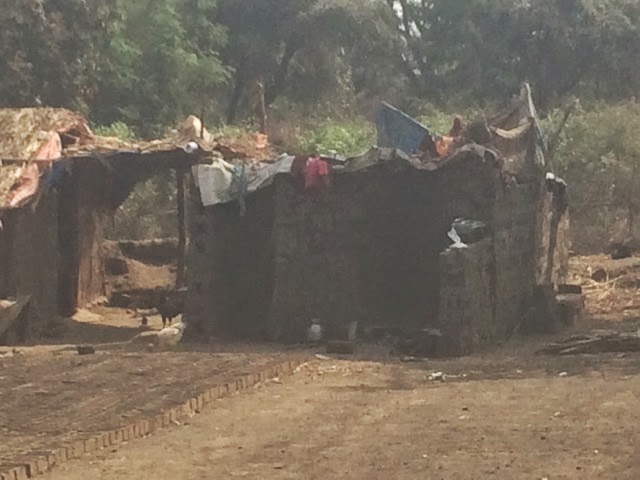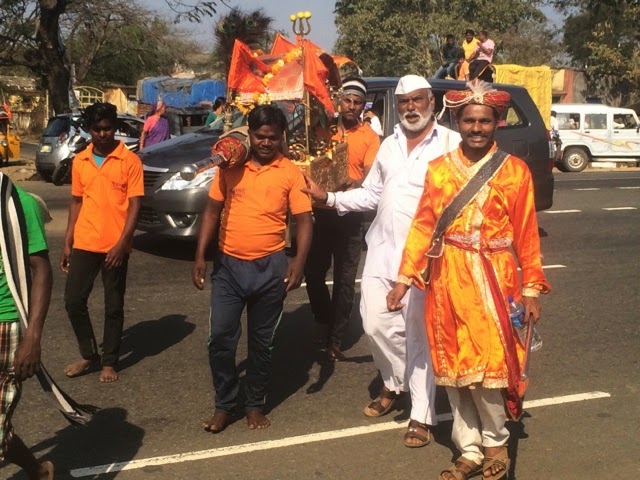And I saw brick making fields along the highway. See those straw huts back there? Those are there houses. I thought it was a little funny that people who make and sell bricks for a living don't use some bricks for there own houses.
The water that these brick makers use for bathing.The children of the brick makers. We asked them if they go to school. One of them said that sometimes they do go, but they all had no idea which standard they're in (In India grades are called standards).
This is the village bus stop of Vada. It's crazy how a village in India that looks like about two sets of roads intersecting has about three times the population of Manhattan, Kansas! In India, the word 'village' doesn't refer to fewer people (everywhere here has lots of people) but to a lack of industrialization or mechanization. Modern technology (all the machines we use for things) is not in abundance in villages.
The first page of the menu of the hotel we ate at in the village (I have no idea why, but for some reason Indians call resturants 'hotels', even though they don't let you stay there for the night).
The hotel itself. We were all happy to get such a nice clean hotel (even i Mumbai we don't always get places quite like this).
And even better they had a washroom (bathroom) which Indian resturants almost always never ever do. Although I do think this just happens to be the owner's house so that's why they had one.
And the food (mutton, bakari, paapad, rice, pickled lemon, and pitla- all typical Maharashtrian food) was all very very tasty.
These are Maharahtrian costumes and the orange flags of Hinduism taken up Shivajee Maharaj who fought against the Muslim Mughals.
Being the crazy person I am I convinced the people I was with to start asking locals if it was okay to come inside their houses. Maharahtrians are friendly welcoming people, some of the most in India, so we were able to go into three different houses.
This house (same as previous picture) was fairly large, though it did have a big family. This is the kitchen.It's a farm house, though compared to the farms I've seen in Kansas, the land was very very small and very close to the next farm. As you can see, the floors of all three houses were made of cow dung.
This women is beating some roots with a stick to get ingredients to prepare a daal, which is what we mix with rich and eat.
By far the most incredible part of this trip was meeting 'Adivasis' or tribal people. These two women were barely four feet tall each. They only spoke broken Marathi (tha language of Maharashtra) with u, and couldn't talk in either Hindi or English. They speak their own tribal language. This house (both rooms- a kitchen and another room) was the women on the left's. She said she has two adult children who live with her, but that both are currently in the forest. Tribal people Rare not farmers, they hunt animals, gather berries and plants, for days at a time in forests. Just to meet them was absolutely breathtaking: the furthest away place they'd heard of was Mumbai: a mere two hours away by car! They recognized the word 'America' but knew nothing at all about it or even about 'India'.
The kitchen in the tribal home and it's dung floor.
While talking to those women, I noticed a pot kept moving every few seconds. We asked what it was, and found that it was crabs that one women's son had caught in a nearby stream.

























































